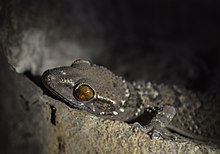쿠엘브렌 이 비르드
Coelbren y Beirdd코엘브렌 이 비르드(영어: "Bards's lot")는 18세기 후반에 이올로 모건윅으로 가장 잘 알려진 문학 포거 에드워드 윌리엄스에 의해 만들어진 각본이다.[1]
알파벳 체계는 20개의 문자와 20개의 다른 긴 모음의 표현으로 구성되었는데, 이것은 고대 그리스어를 닮았고, 4면 나무 조각에 조각되어 그가 "피티넨"이라고 부르는 틀에 끼워 넣을 수 있었다. 윌리엄스는 친구들과 공증인들에게 나무로 만든 드루이드 알파벳을 선물했고, 그 진위여부를 설득하는 데 성공했다.[2]
아들 탈리진 윌리엄스가 쓰고 1840년 팜플렛으로 출판한 웨일스 바르디치와 드루이딕 에세이는 알파벳의 진위를 변호하고 1838년 아베르가벤니 에르스테드포드를 수상하였다.[3][4]
탈리진 윌리엄스의 저서는 다른 코엘브레나우르 비어드(Coelbrennau'r Beirdd)에 대해 쓰여졌는데, 이 이름은 이올로 원고에 있는 웨일스어 원고와 바르다스에 있는 원고의 이름이며, 하나는 "yn dorredig a chyllell"이라는 부제가 붙어 있다. Iolo Morgwg는 이 작품들은 원래 Plas y Fan, Neath Abbey, Margam Abbey, Raglan Library에 그들의 원고를 복사하여 보관하고 Meurig Dafyd와 Lewys Morg가 1700년대에 다른 것들 중에서 편집한 Glamorgan의 bards 작품이라고 제안했다. 이것들은 에드워드 다피드, 존 브래드포드, 그리고 릴리웰린 쉰에 의해 다시 쓰여진 것으로 제안되었다. 모건wg는 시언과 브래드포드의 원고 일부를 수집했다고 제안했고, 루이스 모건wg의 출처를 포함한 대다수는 분실되었다. 진위에 대한 이러한 주장은 글린 코티 루이스와 같은 수많은 학자들에 의해 의심받아 왔다.[5][6][7][8]
에드워드 데이비스(1756–1831)의 켈트 연구(1804)의 편지 표:
참고 항목
참조
- ^ "Archived copy of "Coelbren y Beirdd – The Bardic Alphabet"". Archived from the original on 17 November 2010. Retrieved 26 February 2011.
- ^ Jane Williams (18 November 2010). A History of Wales: Derived from Authentic Sources. Cambridge University Press. pp. 6–. ISBN 978-1-108-02085-5. Retrieved 24 October 2012.
- ^ 윌리엄스, 탈리진, (ab Iolo), 쿠엘브렌 Y 비어드; 바딕 알파벳에 관한 웨일스 에세이, W. 리스, 롤란도베리, 1840년.
- ^ Rob Williams (1852). A biographical dictionary of eminent Welshmen., from the earliest times to the present. W. Rees. pp. 536–. Retrieved 24 October 2012.
- ^ Cambrian Archaeological Association (1846). Archaeologia cambrensis. W. Pickering. pp. 472–. Retrieved 8 November 2012.
- ^ Lewis (Glyn Cothi) (1837). Gwaith Lewis Glyn Cothi: The Poetical Works of Lewis Glyn Cothi, a Celebrated Bard, who Flourished in the Reigns of Henry VI, Edward IV, Richard III, and Henry VII. Hughes. pp. 260–. Retrieved 8 November 2012.
- ^ Iolo Morganwg; Owen Jones; Society for the Publication of Ancient Welsh Manuscripts, Abergavenny (1848). Iolo manuscripts: A selection of ancient Welsh manuscripts, in prose and verse, from the collection made by the late Edward Williams, Iolo Morganwg, for the purpose of forming a continuation of the Myfyrian archaiology; and subsequently proposed as materials for a new history of Wales. W. Rees; sold by Longman and co., London. pp. 10–. Retrieved 24 October 2012.
- ^ Marion Löffler (2007). The literary and historical legacy of Iolo Morganwg, 1826–1926. University of Wales Press. ISBN 978-0-7083-2113-3. Retrieved 24 October 2012.




